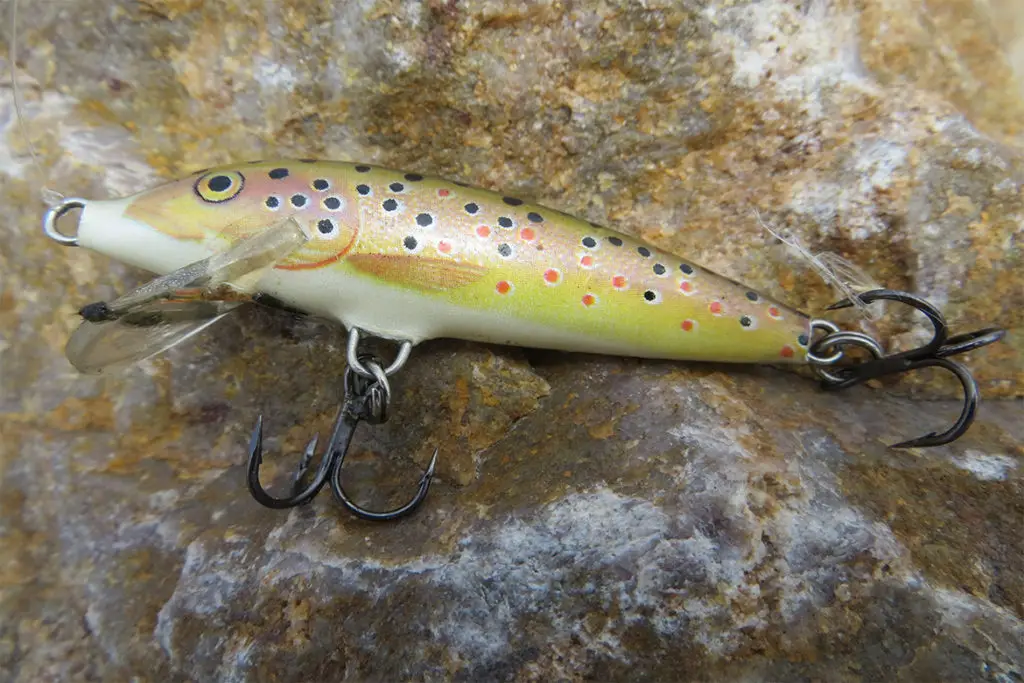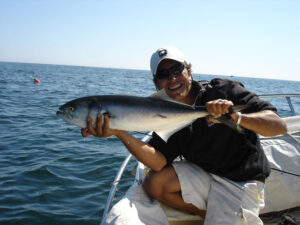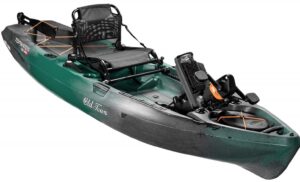Are you a fishing enthusiast? Do you love the thrill of reeling in trophy fish from the depths of a river? If so, then you know the importance of having the right gear, especially when it comes to lures. In this comprehensive guide, we will delve into the world of river fishing lures, exploring the various types, techniques, and strategies that can help you become a master angler. Get ready to dive into the fascinating world of river fishing lures and discover the secrets to landing the biggest catch of your life!
The Importance of Choosing the Right Lure for River Fishing
When it comes to river fishing, choosing the right lure can make all the difference. Rivers are dynamic environments with constantly changing water conditions, currents, and prey species. To maximize your chances of success, it’s crucial to select a lure that effectively mimics the baitfish or prey that the target species is feeding on. The right lure not only attracts fish but also triggers their predatory instincts, enticing them to strike.
River fishing lures come in various shapes, sizes, and colors, each designed to imitate different types of baitfish or insects. Some lures are designed to mimic the erratic movements of injured or fleeing prey, while others imitate the natural swimming motion of live bait. Let’s explore some of the most popular types of river fishing lures and how to use them effectively.
Top River Fishing Lures and How to Use Them
1. Spinnerbaits
Spinnerbaits are versatile lures that can be used to target a wide range of fish species in rivers. They consist of a metal blade that spins when retrieved, creating flash and vibrations that mimic a small fish or injured prey. These lures are particularly effective in murky or stained water, where fish rely more on their sense of vibration and movement to locate prey.
When fishing with spinnerbaits, cast your lure upstream and allow it to drift downstream with the current. Retrieve the lure at a steady pace, making occasional pauses or twitches to imitate the movements of injured prey. Spinnerbaits are highly effective for catching predatory fish such as bass, pike, and walleye.
2. Crankbaits
Crankbaits are another popular choice for river fishing, known for their ability to dive deep and mimic the movement of baitfish. These lures feature a lip or bill that causes them to dive when retrieved, allowing you to target fish at different depths in the water column. Crankbaits come in various shapes, sizes, and diving depths, making them suitable for different river fishing conditions.
When using crankbaits, cast your lure parallel to the riverbank and retrieve it at a steady pace. Vary your retrieve speed and depth to find the most effective presentation for the target species. Crankbaits are highly effective for catching species such as bass, trout, and salmon.
3. Soft Plastic Baits
Soft plastic baits, such as worms, creature baits, and swimbaits, are a staple in river fishing. These lures are made of a soft, flexible material that mimics the texture and movement of live bait. Soft plastic baits can be rigged in various ways, including Texas rig, Carolina rig, or weightless rig, depending on the fishing conditions and target species.
When using soft plastic baits, cast your lure near cover or structure, such as rocks, fallen trees, or weed beds. Allow the lure to sink to the desired depth, then retrieve it with a slow and steady motion, mimicking the natural movements of prey. Soft plastic baits are effective for catching a wide range of species, including bass, panfish, and catfish.
4. Jigs
Jigs are versatile lures that can be used to target both freshwater and saltwater species in rivers. They consist of a weighted head and a trailing skirt or soft plastic bait. Jigs are highly effective for imitating crawfish, a favorite food of many river-dwelling fish species. They can be fished vertically or horizontally, depending on the depth and structure of the river.
To fish with jigs, cast your lure near the riverbed or structure and allow it to sink. Use a slow and steady retrieve with occasional pauses or hops to imitate the movement of a crawfish. Jigs are particularly effective for catching bass, walleye, and trout.
5. Topwater Lures
Topwater lures are designed to create surface disturbance, imitating the movements of injured prey or frogs. These lures are highly effective for attracting predatory fish that feed near the water’s surface, such as bass and pike. Topwater lures come in various shapes and designs, including poppers, buzzbaits, and prop baits.
When fishing with topwater lures, cast your lure near cover or structure and retrieve it with short, sharp jerks or a steady, slow motion. The key is to create noise and commotion on the water’s surface, attracting the attention of nearby fish. Topwater lures are most effective during low-light conditions or when fish are actively feeding on the surface.
Choosing the Right Lure Color for River Fishing
When it comes to lure color selection, it’s essential to consider the water clarity and the prey species that the target fish are feeding on. In clear water, natural colors such as green, brown, or silver are more effective at imitating baitfish. In murky or stained water, brighter colors such as chartreuse, orange, or red can help your lure stand out and attract fish.
Experimenting with different colors is key to finding the most effective combination for your local river. Pay attention to the forage species present in the river and try to match the color and size of your lure to what the fish are actively feeding on. Remember, it’s not just about attracting fish; it’s about triggering their predatory instincts and convincing them that your lure is an easy meal.
Techniques and Strategies for River Fishing with Lures
Now that you have a good understanding of the different types of river fishing lures, let’s explore some techniques and strategies that can help you maximize your success on the water.
1. Understand the River’s Currents
Rivers are constantly flowing bodies of water, and understanding their currents is crucial for effective lure presentation. Fish often position themselves in areas where the current creates an ambush point or brings food directly to them. Look for areas with eddies, riffles, or pockets of slower-moving water, as these are prime locations for fish to hold and feed.
When fishing in rivers with strong currents, it’s important to adjust your lure presentation accordingly. Use heavier lures or add weight to your line to ensure your lure stays in the strike zone. Conversely, in slower-moving rivers, lighter lures or weightless presentations can be more effective.
2. Target Structure and Cover
Rivers are teeming with structure and cover, providing hiding spots and ambush points for fish. Look for fallen trees, rocks, weed beds, or submerged vegetation, as these areas often hold fish. Targeting these areas with precise lure placement can increase your chances of success.
When fishing near structure or cover, cast your lure close to the target and retrieve it with a slow and steady motion. Pay attention to any changes in resistance or movement, as these could indicate a fish striking your lure. Be patient and persistent, as fish often hold tight to structure and may require multiple presentations to entice a strike.
3. Adapt to Changing Conditions
River conditions can change rapidly, and adapting your lure choice and presentation is essential for consistent success. Pay attention to factors such as water temperature, water clarity, and weather patterns, as these can influence fish behavior and feeding patterns.
During cold-water periods, when fish are less active, slow presentations with finesse lures can be more effective. As water temperatures rise, fish become more active, and faster, more aggressive lure presentations can trigger strikes. Adjust your lure selection and retrieve speed based on the prevailing conditions to increase your chances of success.
4. Use Stealth and Patience
River fish are often more wary and skittish than their lake or pond counterparts. Using stealth and patience is crucial for getting close to fish without spooking them. Avoid making excessive noise or sudden movements that could alert fish to your presence.
When fishing in clear water, it’s important to keep a low profile and cast from a distance. Use longer casts whenever possible to avoid spooking fish that may be holding in shallow areas. Take your time and work the area thoroughly, as river fish can be more selective and require precise presentations to trigger a strike.
Conclusion
Mastering the art of river fishing requires not only skill and knowledge but also the right lures and techniques. By choosing the right lure for the target species and understanding the dynamics of the river environment, you can significantly increase your chances of landing trophy fish. Remember to experiment with different lures, colors, and presentations to find what works best in your local river. With practice and persistence, you’ll soon be reeling in the biggest catches of your life!
Frequently Asked Questions (FAQs) After The Conclusion
1. What is the best time of day to fish in rivers?
The best time of day to fish in rivers can vary depending on the species you are targeting and the specific river you are fishing in. However, as a general rule, early mornings and late evenings tend to be the most productive times. During these times, the water is usually cooler, and fish are more active and feeding. It’s also worth noting that certain species, like trout, are more active during low-light conditions, such as dawn and dusk.
2. How do I choose the right size lure for river fishing?
Choosing the right size lure for river fishing depends on multiple factors, including the size of the target species and the baitfish or prey they are feeding on. As a general guideline, match the size of your lure to the prevalent prey in the river. If the river is teeming with small minnows, opt for smaller lures to mimic their size. Conversely, if larger baitfish are abundant, go for larger lures to imitate them. It’s also helpful to consider the water clarity, as fish in clear water may be more wary and require smaller, more subtle presentations.
3. What should I do if I’m not getting any bites?
If you’re not getting any bites, it’s essential to stay patient and make adjustments to your fishing approach. Start by experimenting with different lure colors, sizes, and presentations to see if the fish are more receptive to a different style. You can also try changing your fishing location, targeting different areas of the river with varying depths, structures, or cover. Pay attention to the behavior of other anglers around you or consult local fishing reports to gather information on what techniques or lures have been successful recently.
4. Are there any safety precautions I should take when river fishing?
Yes, safety should always be a priority when river fishing. Here are a few essential safety precautions to keep in mind:
- Wear a properly fitting life jacket or personal flotation device (PFD) at all times, especially if wading in deeper or faster-moving water.
- Be aware of your surroundings and watch out for potential hazards such as submerged rocks, fallen trees, or strong currents.
- Let someone know your fishing plans, including where you’ll be fishing and when you expect to return.
- Carry a first aid kit and know basic first aid procedures in case of any accidents or injuries.
- Stay hydrated and protect yourself from the sun by wearing sunscreen, a hat, and lightweight, breathable clothing.
5. Can I use live bait instead of lures for river fishing?
Absolutely! Using live bait can be highly effective for river fishing, especially if you’re targeting species that primarily feed on live prey. Common live bait options for river fishing include minnows, worms, nightcrawlers, or crayfish. Be sure to check local regulations to ensure that using live bait is allowed in the specific river you’re fishing. Live bait can be presented using various rigging techniques, such as a Carolina rig, slip bobber rig, or simply threading it onto a hook. Experiment with both lures and live bait to determine which option works best for your desired species and fishing conditions.
Summary
River fishing lures are essential tools for any angler looking to conquer the exciting world of river fishing. By selecting the right lure, understanding the river’s currents, targeting structure and cover, adapting to changing conditions, and utilizing stealth and patience, you can significantly increase your chances of success. Remember to experiment with different lures, colors, and techniques to find what works best for your local river and the target species you’re after. With dedication, practice, and a bit of humor, you’ll soon be reeling in trophy fish and creating unforgettable memories on the river.
So, gear up, grab your fishing rod, and head to the nearest river armed with your newfound knowledge of river fishing lures. Get ready for an adventure like no other as you explore the dynamic world beneath the water’s surface and come face-to-face with the most prized fish in the river. Happy fishing!





